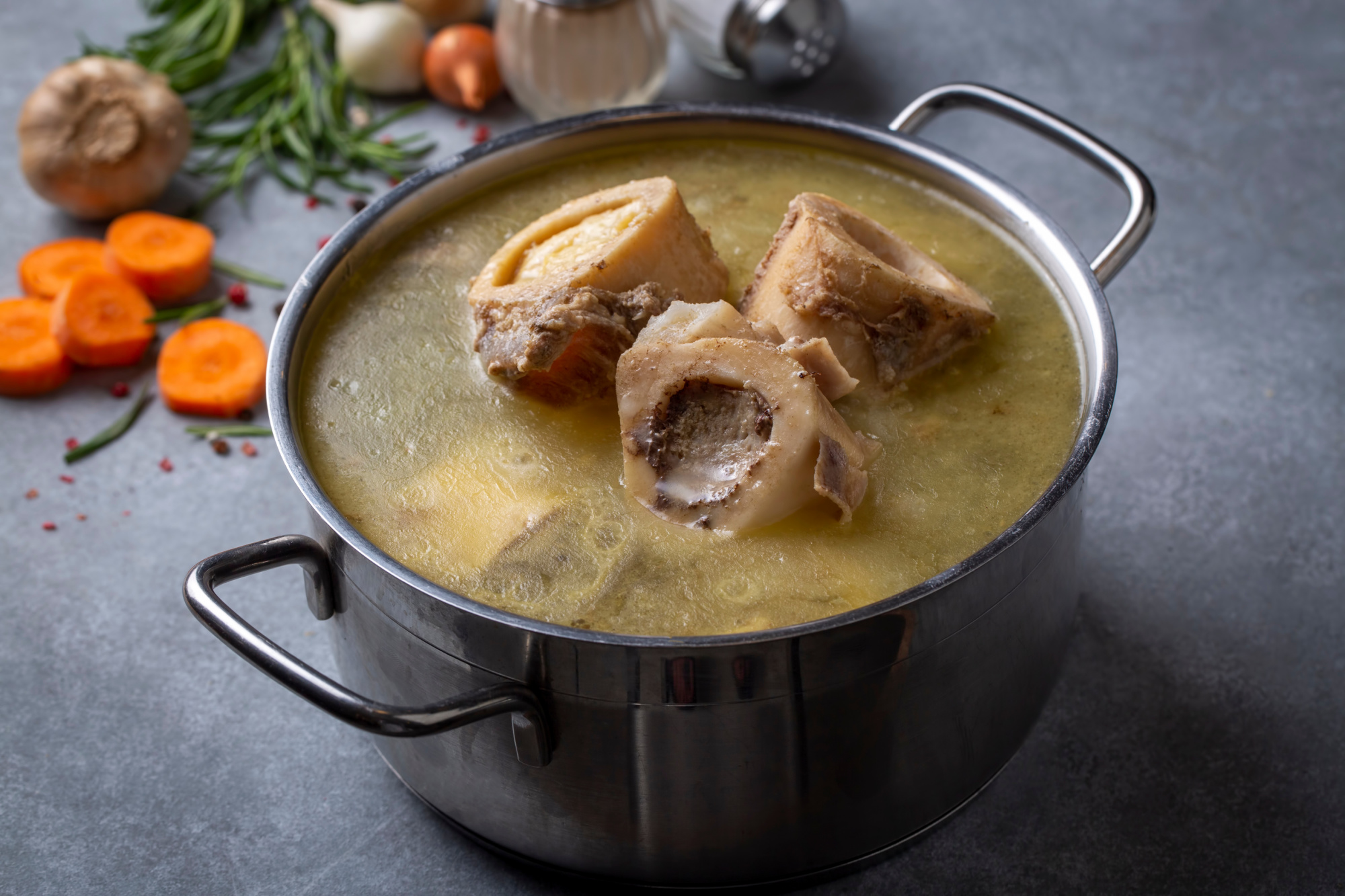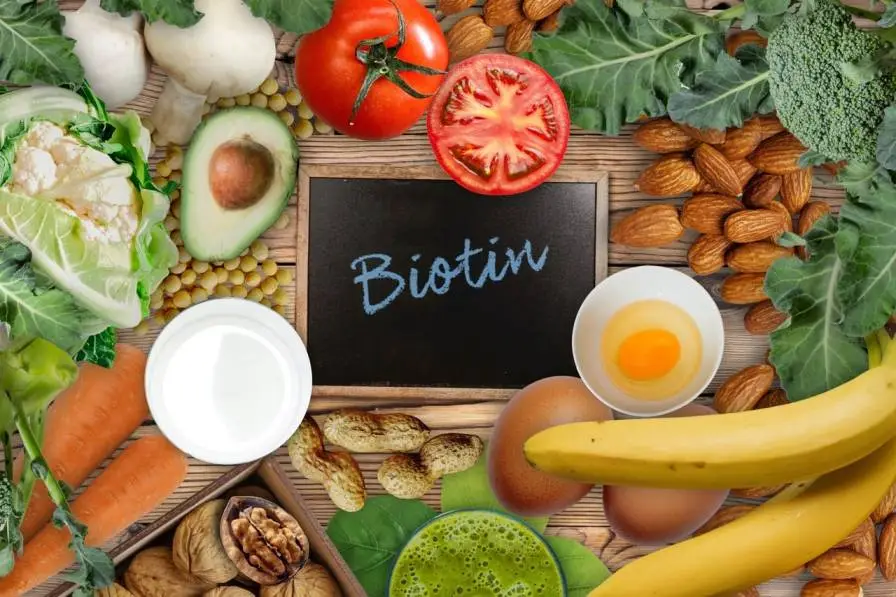The first thing that pops into my head is: what exactly is glutamine? One non-essential amino acid is glutamine, sometimes referred to as L-glutamine. Furthermore, it is the most prevalent amino acid. Consuming foods high in glutamine will help you reap the many benefits of this amino acid. These foods may aid in promoting muscle growth, enhancing digestion, boosting immunity, accelerating muscle recovery, and preventing muscle loss.
The 16 Best Glutamine Foods to Include in Your Diet
1. Seafood
:max_bytes(150000):strip_icc()/279460-Old-Bay-Seafood-Boil-ddmfs-139-4x3-aa189a5c09104659957fe6fcb715c4bd.jpg)
Fish, mussels, shrimp, and crabs are examples of seafood that are great providers of glutamine.
Fish from saltwater have a higher glutamine content than fish from freshwater. They can be grilled, steamed, or added to salads and soups. They lose texture and nutritional content if they are overcooked, so be careful.
2. Grass-fed Meat
One of the best sources of protein is meat. You can incorporate any of these meats—chicken, lamb, or beef—into your lunch or dinner as they are excellent providers of glutamine. But, if you are fat, suffer from a cardiac condition, or have high blood pressure, you should exercise caution when consuming a lot of red meat.
Eat three ounces of lean beef cuts (3.2–4 g glutamine) or three ounces of chicken breast (3.7 g glutamine). Steer clear of burnt meat and pair your meat with fresh green vegetables for a balanced diet.
3. Red Cabbage
One vegetable high in glutamine is red cabbage. It strengthens immunity and improves general health.
Add it to salads, sandwiches, and wraps, as cooking it reduces the amount of glutamine in it. You might also think about fermenting it or juicing it.
4. Milk
Grass-fed milk helps to increase the synthesis of the antioxidant glutathione and is high in glutamine.
Perceptions of milk and its health consequences were compared in a study involving one thousand adult inhabitants of the United States. The statistics show that 61% of survey respondents, or about 610) agree that milk consumption is healthy, whereas just 11% and 15% of respondents, respectively, think it is harmful and has no effect. Just 14% of respondents were unclear about the health benefits of moderate milk drinking.
To help your body rebuild its lost glutamine stores, have unsweetened milk with breakfast in the morning. In the process, it will also strengthen your bones.
5. Eggs
Another excellent source of glutamine is eggs. 0.6 grams of glutamine are found in 100 grams of eggs.
To give your body the vitamins, minerals, and amino acids it needs, you can have eggs for breakfast or lunch, depending on your daily needs. To add flavor and diversity to your lunch, try some omelets or boiled, fried, or poached eggs.
6. Yogurt

Yogurt is another healthy dairy product that offers numerous advantages to your health, including better digestion and a higher number of gut bacteria. If you're looking for a dietary source of glutamine, include it in your diet. Verify that the yogurt you eat comes from milk that has been grass-fed.
Making a bowl of yogurt at home and keeping it refrigerated is preferable to eating the low-glutamine variety that is sold in stores. eat it as a snack, substitute it for mayonnaise in your salad, or eat it for dessert with fruits like berries. Bananas and apples can also be included because they contain glutamine.
7. Cheese Ricotta
Lime juice or citric acid are added to milk to produce ricotta cheese, which causes the milk protein to precipitate. Grass-fed ricotta cheese is high in glutamine, much as grass-fed milk.
If you sprinkle it with some salt and pepper, you can have it for breakfast. If weight gain is not a concern for you, add a small amount of sugar. For an extra special meal, add it to wraps, sandwiches, and salads.
8. Almonds
Nuts are a great source of protein and good fats. Nuts are also a great source of the amino acid glutamine. Because it's tempting to overindulge in these little bursts of happiness, you need to be mindful of how many nuts you eat.
These healthy seeds are a great addition to salads, flavored rice, breakfast bowls, and homemade protein shakes in the morning. To preserve their nutritional benefits, eat raw almonds, hazelnuts, pistachios, peanuts, and walnuts.
9. Beans
Excellent providers of glutamine are kidney beans and soybeans. Eat beans if you're a vegetarian or vegan and can't eat sources of glutamine from animals. Eating beans can also hasten the healing process following an injury.
For a well-balanced and healthful meal, eat boiling beans with vegetables and a lean protein source, like chicken breast or mushrooms.
10. Parsley
A beloved herb, parsley is used to flavor and enhance a variety of foods, including soups and quiche. Parsley is high in glutamine in addition to being a healthy source of vitamins, minerals, and dietary fiber.
You can add it to a hot dog, stuffed flatbread, sandwich, grilled fish, mushroom, or vegetable soup.
11. Leafy Greens with Dark Color
Glutaamine is found in abundance in dark leafy vegetables such spinach, collard greens, kale, lettuce, radish greens, and cilantro. If you exercise frequently, sleep less, and are always exhausted, eating more leafy greens will help strengthen your immune system and promote better health.
Include them in your wraps, sandwiches, and salads. Lean protein, good fats, and carbohydrates should be included in the meal to balance it.
12. Organ Meat
Liver is one of the best organ meat sources of glutamine. Animal liver can aid in hastening the process of your body's requirement to restore glutamine levels if you're sick or have lost muscle from a flesh wound.
Season the liver generously and grill it. Serve it with boiling beans, leafy greens, paprika, lime juice, and a touch of salt.
13. Broth with Bones

Bone broth has several health benefits and can give you energy right away. Drink the glutamine-rich bone broth if you feel like your immunity needs a boost and you have been getting sick frequently.
To make it at home, fill a soup pot with 2-3 cups of water, beef bones, and additional vegetables. Season to taste. For 60 minutes, cook on low heat with a lid on. Eat it with garlic bread or flatbread.
14. Asparagus
As a good supplier of glutamine, both white and green asparagus can help to halt muscle loss and hasten the healing process.
Sauté, grill, or include into a soup. To make the dish healthy, have it with other vegetables, lean protein, and dark leafy greens.
15. Legumes
Beans, lentils, peas, and chickpeas are examples of legumes that are good providers of glutamine. Since vegetarians and vegans are devoid of certain amino acids that may be obtained from animal meat, they are excellent for them.
To incorporate legumes into your regular diet, try adding them to soups, dips, savory pancakes, wraps, or curries.
These are the greatest foods high in glutamine that you can eat to build stronger bones, increase immunity, maintain muscular mass, and improve muscle tone. Now let's examine the advantages of eating organic foods high in glutamine.
16. Seaweed Nori
Because of its high glutamine level, nori seaweed, a common component in sushi and other Asian meals, is not only delicious but also nutritious. It is notable for being a high plant-based source of glutamine, which supports digestive health, strengthens the immune system, and helps with tissue repair. It has a high iodine content as well, which is vital for thyroid function. It also has high levels of vitamin B12 and minerals including calcium and iron, which support general health.
Because nori seaweed contains glutamine, consuming it enhances not only your taste buds but also your general health and energy level. Try incorporating it, for example, by using it to make sushi wraps or as a snack on toasted nori sheets. For a savory taste and an increase in glutamine, you may also crumble it into soups or salads. You may also read this: Uses Of Iron For Your Health, Hair, And Skin
Benefits Of Glutamine
Eating foods high in L-glutamine has a number of health benefits. According to certified nutritionist Valeria Dolbel, "The brain produces glutamate, which is necessary for alertness, memory, and learning, more easily when there is a substantial glutamine supply." It also aids in preventing cognitive aging. Scroll down to see the further advantages.
-
enhances the digestive tract's health by controlling the intestinal lining's cell division.
-
It helps the body create the powerful antioxidant glutathione.
-
It keeps the body's pH equilibrium.
-
It aids in preserving muscular mass.
-
It facilitates both systemic and cellular detoxification.
-
enhances memory and learning and supports normal brain function.
The aforementioned list makes it very evident that foods high in glutamine are critical to general health. The second query is: Who should eat foods high in glutamine and when should one deliberately choose to do so?
Who Should Eat Foods High in Glutamine?
-
These meals ought to be a part of your regular diet if you:
-
sustain serious burns.
-
Exercise with a high intensity.
-
frequently contract the flu and colds.
-
possess ulcerative colitis, Crohn's disease, IBS, or celiac disease.
-
lost muscle mass as a result of a diet plan.
-
have a flesh wound and have lost muscular mass.
-
are wasting away from AIDS or cancer.




